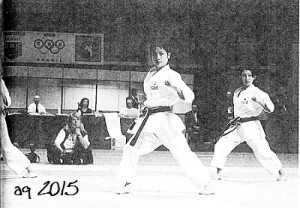
October 1998, the Japanese team winning the Women’s Team Kata Competition at the 14th WKF Karate World Championships held in Brazil.
In 1994, the 12th World Karate Championship was held in Kota Kinabalu, Malaysia from December 8 to December 11. Organized by the World Karate Federation (WKF), the World Karate Championships are considered the highest level of competition for karate. It was on this occasion that the splendid kata Chatan Yara Kūsankū entered the world’s limelight in one fell swoop. This Chatan Yara Kūsankū became what is presently the most popular karate kata seen in competitions around the globe. Proof? Barely one week ago Furukawa Karen performed Chatan Yara Kūsankū in the finals of the World Junior, Cadet and U21 Championships Jakarta and won the gold medal.
This popular kata was actually altered for the use in sports competitions, especially the last part to allow for the nidan-geri combi to point to the front. I will later introduce its original form but first would like to take you along its path of glory.
“Yokoyama no Chatan Yara” took the world by storm
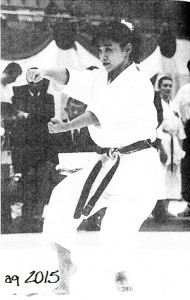
1994, Yokoyama Hisami wins gold at the 12th World Karate Championships (WKF). Since then, Chatan Yara spread to the world as in an explosion.
In December 1994, at the 12th World Karate Championships held by the World Karate Federation (WKF) in Kota Kinabalu, Malaysia, the Japanese player Yokoyama Hisami (nowadays: Inoue) achieved her dearest wish of overall victory in the women’s individual kata category. Her kata of triumph was Chatan Yara Kūsankū. Yokohama had previously performed Chatan Yara Kūsankū in numerous competitions as her tokui–kata. From this reason the image of “Chatan Yara equals Yokoyama” emerged. On a Japanese fanpage I found the words:
“You cannot talk about Chatan Yara Kūsankū without talking about Yokoyama Hisami”.
See for yourself: Yokoyama Hisami winning gold with Chatan Yara Kushanku at the WKF World Karate Championships 1994 in Malaysia ↓
Two months prior to the above mentioned victory in Malaysia, Yokoyama also won the gold medal with her Chatan Yara at the Asian Games (Asia Olympics) held in Hiroshima. Following these huge successes Yokoyama was featured all over domestic and foreign mass media which was described as truly being a “Yokoyama Fever”. With Yokoyama being in the limelight, so was her “Chatan Yara Kūsankū”.
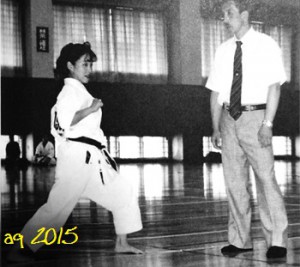
July 9, 1994, at the “5th Fukuoka World Women Karate Tournament”: Yokoyama Hisami (today: Inoue) receives instruction in kata by Inoue Yoshimi. Photo: Yachiyo Shinbukai.
Since that time in particular female kata players chose her specific version of Chatan Yara Kūsankū as their preferred competition kata. In October 1998, at the 14th Karate World Championships of the WKF held in Brazil, the Japanese kata team with Amamiya Sayuri, Wakabayashi Kasuge, and Chiharu Hara performed a majestic Chatan Yara Kūsankū and won the gold medal in the women’s team kata category.
In the same year, at the Inter-High-School Championships, Mochizuki Rina (Utsunomiya Bunsei Girls’ High School) also won with this kata. And in October the same year at the Kanagawa National Athletic Meet Morooka Nao from Kanagawa Prefecture, 2nd year at the Seisen Girl’s Institute Senior High School, achieved second place with this kata in the youth girl individual kata category.
Watch Morooka Nao perform Chatan Yara ↓
You can also buy her DVD at Champ Online or first watch the advertising.
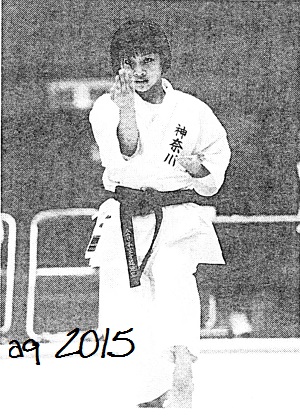
Autumn 1998, Morooka Nao, 2nd year at the Seisen Girl’s Institute Senior High School, achieved second place with “Chatan Yara Kūsankū” in the Youth Girl Individual Kata category at the Kanagawa National Athletic Meet.
Besides the above noted females, many other female kata players won top ranks in competitions with the “Yokoyama Chatan Yara”. It should be noted that the “Yokoyama Chatan Yara” was significantly remodeled from the original form, for the sake of meeting the various demands of competitions and sports meetings. This fact unbeknownst to athletes and functionaries alike, because Yokoyama had won the World Karate Championship with this remodeled kata, and because videos appeared far and wide on the market places, and because the media celebrated her, this version of Chatan Yara Kūsankū was performed ever since in competitions. It is from this reason that it had also been labelled the “Yokoyama-copy Kūsankū”.
In any case, as can be seen in the following excerpt of Chatan Yara 1st places, the “Chatan Yara Fever” had only just begun. Though a little tuned here and there, these are all the same as the Yokoyama-copy, starting with the world famous Hasegawas:
- Hasegawa Yukimitsu: 1st place with it at the 58th National Sports Meet (Kokutai) in Japan 2003.
- Hasegawa brothers: 17th World Karate Championships in Mexico, 2004.
- Senjug Mirna: Croatian Karate Grand Prix 2009.
- Antonio Diaz: Istanbul Open 2011.
-
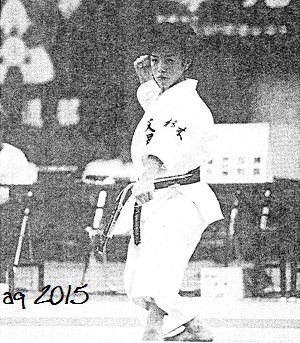
1998, Mochizuki Rina (Utsunomiya Bunsei Girls’ High School), winner of the individual girls category with “Chatan Yara Kūsankū” at the Summer Inter-High-School Championships.
Ada Wong: Commonwealth Karate Champs 2011.
- Antonio Diaz: Panamerican Karate Championships in Nicaragua 2012.
- Antonio Diaz: Paris Open 2012.
- Antonio Diaz: 21st WKF World Karate Championships France 2012.
- Viviana Bottaro: Italian Senior Kata Championships 2012.
- Rika Usami: 21st WKF World Karate Championships Paris Bercy 2012.
- Nguyen Hoang Ngan: Southeast Asian Games in Myanmar 2013.
- Aimee Sell (EKF national team). South Yorkshire Open.
- Kata Team Japan: 14th APSKF Singapore.
- Shimizu Kiyou: 14th APSKF Singapore.
- Asuka Watanabe: 9th Mas Oyama Cup – All Japan Kyokushin Karate-do Championship.
- Sadie (12 years old): Started learning Shitoryu in the last few months.
- Viviana Bottaro: Italian Kata Championships Ostia 2014.
- Luca Brancaleon: Italian Kata Championships Ostia 2014.
- Sandra Sanchez: Karate1 Premier League championships in Salzburg, Austria.
- Antonio Diaz: Panamerican Championships of the Panamerican Karate Federation in Toronto Canada.
- Japanese Male Team Kata: 2015 Asian Karate Championships in Yokohama, Japan.
- Ryo Kiyuna: Asian Karate Championships in Yokohama, Japan.
- Furukawa Karen: World Junior, Cadet and U21 Championships 2015, Jakarta .
Champ-Online also sells instructional DVDs produced by the Shitōkai and others showing Chatan Yara Kūsankū as a Shitō-ryū kata, for example here, or get the Champ DVD by Riky Usami.
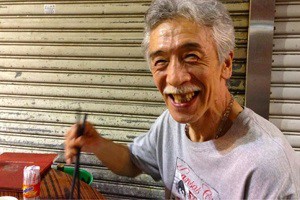
Inoue Yoshimi. Photo: Yachiyo Shinbukai.
Although players prior to Yokoyama have performed Chatan Yara as a tokui kata, they were the minority and the kata did not reach the limelight of the world. What is euphemistically called “adding improvements” in Japan – that is, changing kata for the needs of competition – is prohibited according to the rules of the JKF as of the WKF. But in the case of Yokohama there was no precedence. Before anyone knew, through a gap in the regulations, the modified kata entered the official kata lists of JKF and WKF, as a Shitō-ryū kata, and was in place to conquer the world of karate competition literally over night. Needless to say, since the Yokoyama Chatan Yara had been superinduced into the official competition rules as a Shitō-ryū kata, most of the winning athletes in the first two decades of the “Yokoyama Chatan Yara” in one way or the other were affiliated with the JKF Shitōkai.
Watch Rika Usami vs Morooka Nao at the 36th All Japan Karate-dō Championships in 2008, both with Chatan Yara Kūsankū ↓
Because the above described Chatan Yara fit so well for ladies – maybe even tailor-made – it might be referred to as “Nadeshiko no Chatan Yara”. Nadeshiko refers to Dianthus superbus var. longicalycinus, that is the botanical name for a delicate frilled pink carnation. At the same time it implies a reddish pink on blue – does this evoke visions of red and blue belts? – as well as an adorable, endearing, or beloved child. Moreover, it also refers to the ideal Japanese woman, combining the idea of classical Yamato with that of the delicate frilled pink carnation, which in Japan is a symbol for young women so adorable she makes you want to sit her down and pet her all day long. I know this sounds funny. However, the Japanese women’s football national team is nicknamed “Nadeshiko Japan”. Since they won the 2011 FIFA Women’s World Cup, more images of pugnacious female athletes appeared in the Japanese media and supported a more self-confident and independent image of women in the public perception. In this sense, this Yokoyama-copy Chatan Yara is a very valuable invention.
BTW, if the WKF would list the number one winning kata instead of the names of persons, I bet Chatan Yara would be on top. Shotokan’s stylists also entered rough seas since Chatan Yara. Unsu has been simply relativized.
Nowadays the modified Yokoyama-copy Chatan Yara has become the mainstream. Exactly because of this it is necessary to talk about the original Chatan Yara, the one that was not made for use in competitions, which was not a Shitō-ryū and which had nothing to do with Mabuni Kenwa, but which is a classical martial art that transports unique elements of ancient Okinawan martial culture and battle-tested bunkai.
However, not yet.
To be continued…
© 2015 – 2016, Andreas Quast. All rights reserved.
